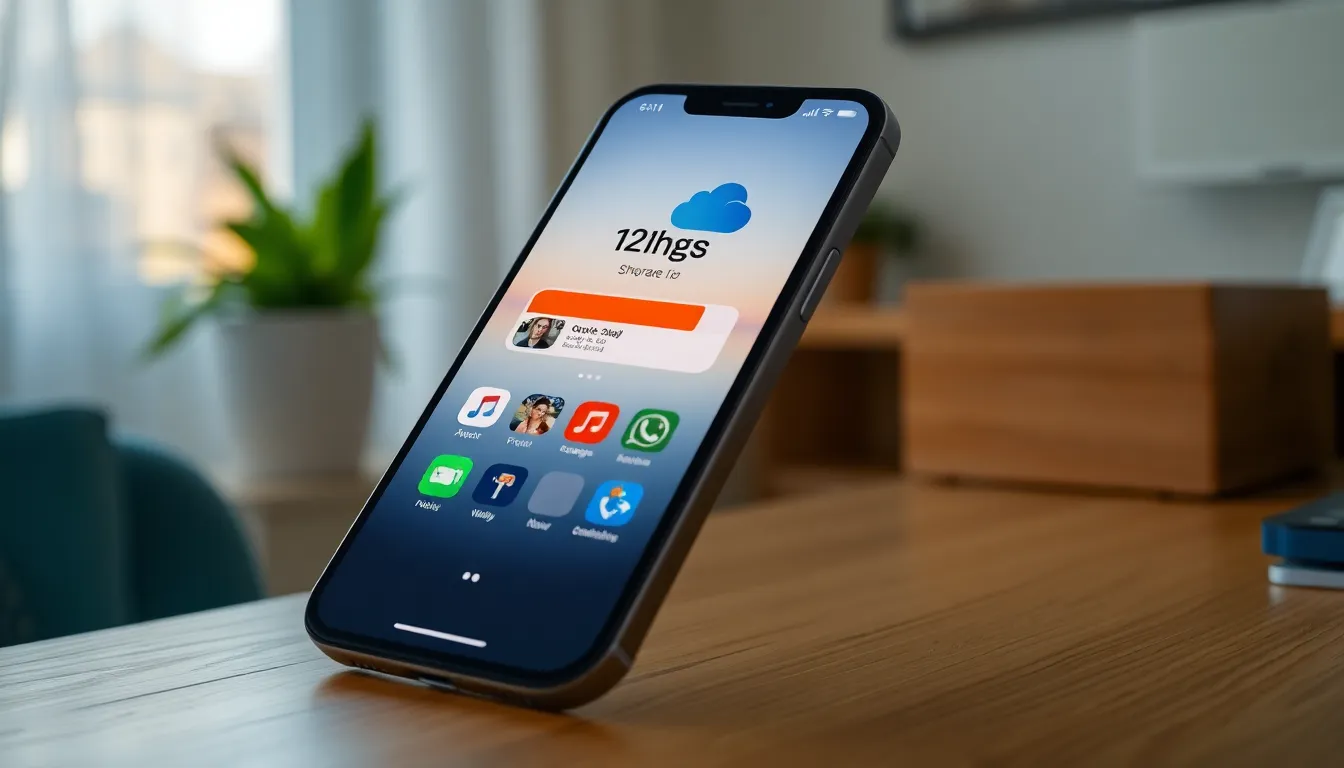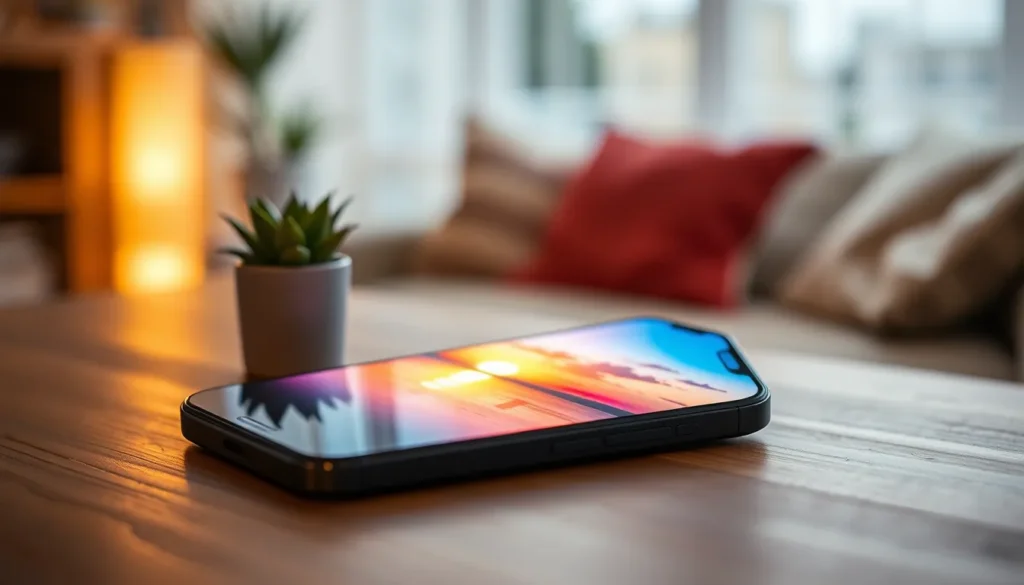Table of Contents
ToggleWhen it comes to iPhones, storage is the unsung hero of the smartphone world. It’s the difference between capturing that perfect sunset or having to delete your cat’s 300 selfies to make room. With various models boasting different storage options, it can feel like a game of digital Tetris trying to figure out what fits.
Overview Of iPhone Storage Options
iPhone storage impacts users’ ability to capture memories and manage files efficiently. Various models come with distinct storage capacities to meet different needs.
Different Models And Their Capacities
Recent iPhone models offer a range of storage options. The iPhone 14, for example, provides 128GB, 256GB, and 512GB choices. Higher-end models, like the iPhone 14 Pro, includes up to 1TB of storage. Previous generations also offered varying capacities, with older models like the iPhone 11 featuring 64GB, 128GB, and 256GB options. Such variety allows users to select a model that aligns with their content needs, from photos to apps.
Storage Variants Over The Years
iPhone storage options have evolved significantly over time. Initially, the original iPhone provided only 4GB and 8GB models. As technology advanced, capacities increased, allowing users to store more data. The iPhone 6 series introduced 16GB, 64GB, and 128GB variants. Apple’s recent focus aims to meet the demand for larger capacities, evident in the transition to 1TB in the latest Pro models. Adapting to user preferences ensures iPhones remain equipped for modern storage needs.
Understanding iPhone Storage Types

iPhone storage comes in two primary forms: internal storage and cloud storage. Both play crucial roles in managing data and enhancing user experience.
Internal Storage Explained
Internal storage refers to the built-in space available on an iPhone for apps, photos, music, and more. Different iPhone models offer varied internal storage capacities, ranging from 128GB to 1TB. Users select models like iPhone 14 or iPhone 14 Pro based on their storage needs. Larger internal storage enables the storage of extensive photo collections without needing to delete other content. When considering a purchase, users should assess their habits, such as how often they capture videos or download apps. These habits directly influence the choice of storage options.
Cloud Storage Options
Cloud storage allows users to save data remotely, freeing up internal storage space on their devices. Popular options include iCloud, Google Drive, and Dropbox. iCloud provides seamless integration with iPhones, offering 5GB of free storage, with paid plans available for more space. Users can access their photos, documents, and backup data from any device with internet connectivity. Selecting cloud storage helps manage large amounts of data effectively. This additional layer of storage alleviates pressure on internal storage, ensuring ample space for everyday use.
Factors Influencing Storage Needs
Storage needs vary based on several key factors. Understanding these can help users choose the right iPhone storage option.
App Sizes And Media Files
App sizes play a critical role in storage consumption. Common apps can range from a few megabytes to several gigabytes. Social media applications, games, and photography apps significantly contribute to storage usage. Media files, such as photos and videos, further strain available space. High-resolution videos from the latest iPhone models can take up substantial storage. For instance, a single minute of 4K video can consume up to 400MB. Users often capture many memories, leading to quick depletion of storage. Assessing app usage and media habits helps in finding a storage capacity that suits individual needs.
Operating System Updates
Operating system updates also impact storage requirements. Each new iOS update typically requires additional space for downloading and installation. Larger updates can demand several gigabytes of free storage before installation can proceed. Users should anticipate these needs when selecting a storage option. Regular updates often improve performance and security, making space management crucial. Users often overlook this factor, but accommodating updates ensures smooth device operation. Prioritizing ample storage helps prevent complications during these essential updates.
Comparing iPhone Storage With Competitors
Storage solutions vary significantly between iPhones and competing brands. Android devices often provide expandable storage options through microSD cards. This feature allows users to increase their storage capacity without needing to purchase a new device. In contrast, iPhones offer fixed internal storage, compelling users to select a model that meets their needs from the start. While Androids typically have budget and flagship models with varying capacities, newer iPhones come with 128GB, 256GB, 512GB, and 1TB choices. Users inclined towards high-res photos and videos might find the higher-end iPhones more appealing.
Value for money is critical when evaluating storage options among devices. iPhones tend to have a higher upfront cost yet provide seamless integration with software and services. Some users appreciate how cloud storage options enhance their overall experience. While Android devices might offer lower initial prices, the value might diminish with the need for additional storage solutions. More expansive iPhone storage plans include higher capacities that justify the investment, especially for those who regularly capture 4K content. Potential buyers should assess long-term needs versus initial costs to determine the better value for their individual lifestyles.
Choosing the right iPhone storage is crucial for maximizing the user experience. With various options ranging from 128GB to 1TB, users can find a model that aligns with their specific needs. Understanding personal usage habits is essential for making an informed decision.
Those who frequently capture high-resolution photos and videos should consider higher storage capacities to avoid the hassle of managing space. Additionally, leveraging cloud storage solutions can provide an effective way to complement internal storage. By evaluating both immediate and long-term storage requirements, users can ensure their iPhone serves them well without limitations.







